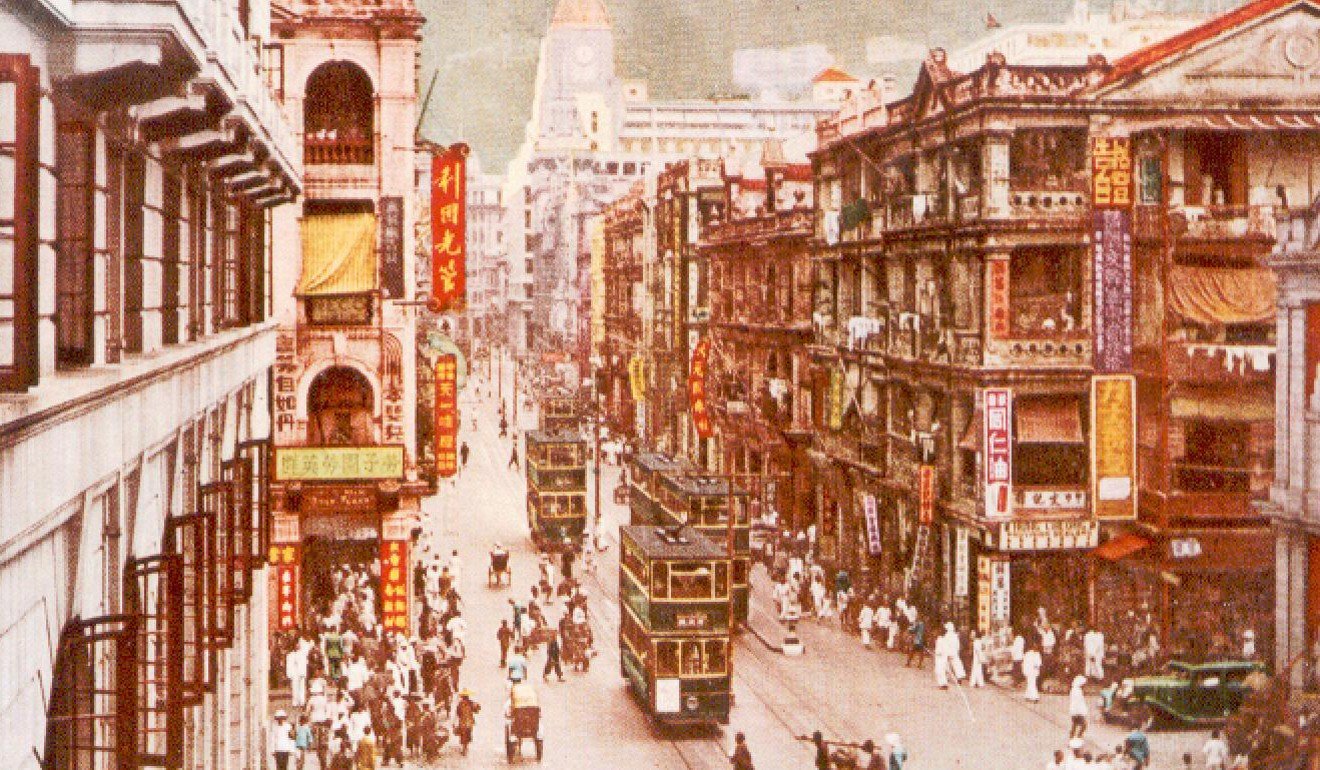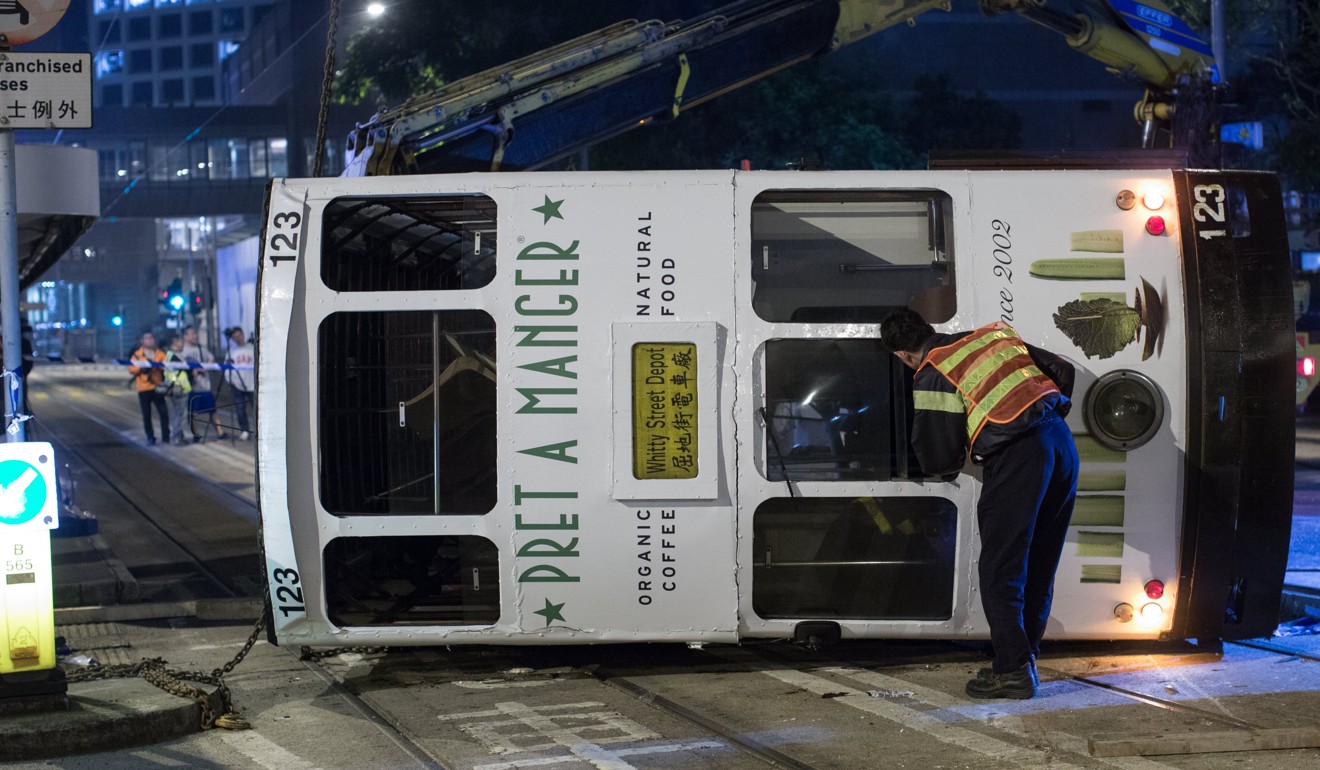
Hong Kong’s century-old love affair with trams: a track record of nostalgia
Slow but cheap, accessible and iconic, city’s history with transport mode dates back to 1880s and it remains a heritage stalwart amid relentless change
Better known among Hongkongers by its pet name “ding ding”, the tram is one of the earliest forms of public transport in the city. And it’s not your average tourist attraction: economical and arriving at frequent intervals, the tram remains the travel mode of choice for many – even after 114 years.
Hop on as the Post takes you on a ride back to where this love affair started, and why there seems to be no sign of stopping.
How did it all start?
In the 1880s, continuous population and economic growth in Hong Kong contributed to the rising demand for a comprehensive transport system, paving the way for a single-track tram system that initially ran from Kennedy Town to Causeway Bay, before it was extended to Shau Kei Wan.
When Hong Kong’s first fleet of 26 trams began operations in 1904, the single-deck cars were split into first and third-class trams, fares of which were priced at 10 and 5 cents respectively. This class system remained in place until 1972.

To cope with rising passenger numbers, the first double-deck tram was introduced in 1912. It accommodated both classes, with first-class passengers occupying the upper, open-top deck and part of the main deck, and third-class passengers taking the remaining space.
Hong Kong trams on track for a smoother (and quieter) ride
In the mid-1920s, cars that resembled the trams we know today emerged on the tracks, complete with a fully enclosed upper deck. In 1946, the single-track system was replaced by the double-track layout.

The trams now traversing Hong Kong Island are a combination of the old and new. While their iconic outer appearance hearkens back to a bygone age, their interiors are more modern; fitted with radio frequency identification (RFID) technology, trams now have real-time positioning systems telling passengers anticipated arrival times.
Then and now: following the old tramway on Hong Kong Island
Who owns the trams?
Possessing 164 trams, Hong Kong Tramways, which is owned and run by RATP Dev Transdev Asia – a joint venture between two French leading operators of public transport – boasts the world’s largest double-deck tram fleet that is still in operation.
At an average capacity of 115 people per car, the trams carry some 200,000 passengers daily.
The 30km tram system comprises two depots, in Sai Wan Ho and on Whitty Street, as well as 120 stops, which are, on average, 250 metres from one another. This proximity means trams – possibly more so than other forms of local public transport – get you closer to your destination, without having to scale long flights of stairs or underground passageways.

Trams operate on six main routes: between Shau Kei Wan and Western Market, Shau Kei Wan and Happy Valley, North Point and Shek Tong Tsui, Causeway Bay and Shek Tong Tsui, Happy Valley and Kennedy Town, and the longest route, Shau Kei Wan and Kennedy Town, which stretches 13km.
Each journey lasts an average of 90 to 100 minutes. Trams operating along main routes arrive at intervals ranging from three to 15 minutes.
Despite Hong Kong’s sweltering summers, only one tram is air conditioned. The live position of the elusive “Cooler Tram” can be tracked using a mobile app.
Tram riders will pay up to 13pc more as fare rises get green light from government
Why are trams so beloved by Hongkongers?
For starters, it’s affordable. Unless you’re a senior citizen, no other mode of public transport can get you from one end of Hong Kong Island to the other for less than HK$3.
Earlier this year, amid falling passenger numbers and declining revenue, tram fares were increased to HK$2.60 for passengers aged 12 and above, HK$1.20 for the elderly aged 65 and above, and HK$1.30 for children under 12. The last fare adjustment was in 2011.

The trams themselves are cultural icons, and have made many appearances in Hong Kong films. Anita Mui Yim-fong’s character, Fleur, famously expresses her fondness for the tram after returning from the dead to reunite with her lover in the 1987 fantasy, Rouge. A romantic scene between characters played by Maggie Cheung Man-yuk and Andy Lau Tak-wah in the 1990 crime drama Days of Being Wild, has put posing for photos on tram tracks on many tourists’ to-do lists. And perhaps the most memorable cinematic tram moment came in the 1982 thriller Nomad, in which characters Kathy and Pong, played by Patricia Ha Man-chik and Kent Tong Chun-yip, make love on board.
Why driving a Hong Kong tram isn’t as easy as it looks
How safe and green is this mode of transport?
Trams can reach maximum speeds of 45km/h, but on average they move at no more than 10km/h.
The most recent major incident involving a tram was in April 2017, when tram No 123, bound for Shek Tong Tsui, derailed and flipped onto its left side on Des Voeux Road Central, near Bank Street, outside the HSBC headquarters. Eleven people were sent to hospital after suffering injuries.

In February, the driver, 24, pleaded guilty to dangerous driving after he admitted to speeding at about twice the limit.
In general, trams are relatively safe. Over the past decade, seven people have died in accidents involving trams. In 2017 alone, 26 people died in accidents involving private cars.
Driver of tram that overturned admits speeding at twice limit
Running on electricity, trams are one of the most environmentally friendly modes of transport. Installed with energy-efficient LED lights, the latest model also has an aluminium body, which is more compact than a wooden one and creates more room within the vehicle for the rush-hour crowd.
For tourists, this may be one of the easiest ways to experience the sights and sounds of Hong Kong. The routes pass multiple heritage attractions such as Western Market in Sheung Wan, the former Legislative Council Building in Central, The Pawn in Wan Chai, and the Tin Hau Temple in Shau Kei Wan.
Amid Hong Kong’s relentless change, breakneck pace of life and frantic pedestrian masses, the city’s trams are one of the few remaining bastions of the slower and calmer days of yesteryear.

